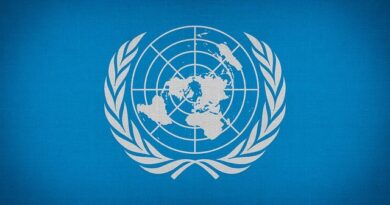Lead Poisoning
Context:
Recently, Lead Poisoning– high levels of lead were found in the blood of thousands of children living around the Kabwe mine in Zambia.
Contents
What is Lead?
- Lead is an element of the periodic table with an atomic number of 82.
- Lead (Pb) is a metal which has been used by humans for centuries dating back to 7000 BC.
- The element is present in various minerals in minute quantities excluding sulphide and lead glance(PBS) which is used to produce the metal around the world.
Uses of Lead
- It is a metal that has been used since Roman times for making paints and pipes as a corrosion resistant.
- Used in car batteries and a major ingredient of lead acid batteries.
- For soldering parts of electrical equipment.
- As electrodes in electrolysis processes.
Properties of Lead
- Lead (Pb) is a white lustrous metal with a soft texture and is highly malleable.
- The metal is highly corrosion resistant, in addition to not being a poor conductor of electricity.
- The metal in its powdered form produces a bluish-white flame when burnt in air.
- Once mixed with fluorine in room temperature forms lead fluoride.
What is Lead Poisoning?
- Lead poisoning or chronic intoxication is caused by the absorption of Lead in the system and is characterised especially by fatigue, abdominal pain, nausea, diarrhoea, loss of appetite, anaemia, a dark line along the gums, and muscle paralysis or weakness of limbs.
- Children younger than 6 years are especially vulnerable to lead poisoning, which can severely affect mental and physical development. At very high levels, lead poisoning can be fatal.
- Lead exposure also causes anaemia, hypertension, renal impairment, immunotoxicity and toxicity to the reproductive organs.
- More than three quarters of global lead consumption is for the manufacture of lead-acid batteries for motor vehicles.

Sources of Lead Poisoning:
- People can become exposed to lead through occupational and environmental sources. This mainly results from:
- Inhalation of lead particles generated by burning materials containing lead, for example during smelting, recycling, stripping leaded paint and using leaded aviation fuel, and
- Ingestion of lead-contaminated dust, water (from leaded pipes) and food (from lead-glazed or lead-soldered containers).
What about the Disease Burden of Lead?
- According to the Institute for Health Metrics and Evaluation (IHME), in 2019, lead exposure accounted for 900 000 deaths and 21.7 million years of healthy life lost (Disability-Adjusted Life Years, or DALYs) worldwide due to long-term effects on health.
- The highest burden was in low- and middle-income countries.
What has been the Response of the World?
- WHO’s Response:
- Lead as one of 10 chemicals of major public health concern by the World Health Organization (WHO).
- WHO has joined with the United Nations Environment Programme to form the Global Alliance to Eliminate Lead Paint.
- Leaded paint is a continuing source of exposure in many countries.
- WHO is also a partner in a project funded by the Global Environment Facility (GEF) that aims to support at least 40 countries in enacting legally binding controls on lead paint.
- The GEF, established on the eve of the 1992 Rio Earth Summit, is a catalyst for action on the environment — and much more.
- India’s Response:
- The Ministry of Environment, Forest and Climate Change (MOEFCC) has passed a notification as “Regulation on Lead contents in Household and Decorative Paints Rules, 2016″ and has prohibited manufacture, trade, import as well as export of household and decorative paints containing lead or lead compounds in excess of 90 Parts Per Million (PPM).
Need of the hour:
- A coordinated and concerted approach across the following areas:
- Proper Monitoring and reporting.
- Prevention and control measures.
- Management, treatment and remediation.
- Public awareness and behaviour change.
- Legislation and policy.
- Global and regional action.
Conclusion:
It is clear from evidence compiled that lead poisoning is a much greater threat to the health of children than previously understood. Although much more research needs to be conducted, enough data have recently emerged for decisive action to begin – and it must begin now.
Source: Down To Earth
Discover more from Simplified UPSC
Subscribe to get the latest posts sent to your email.



